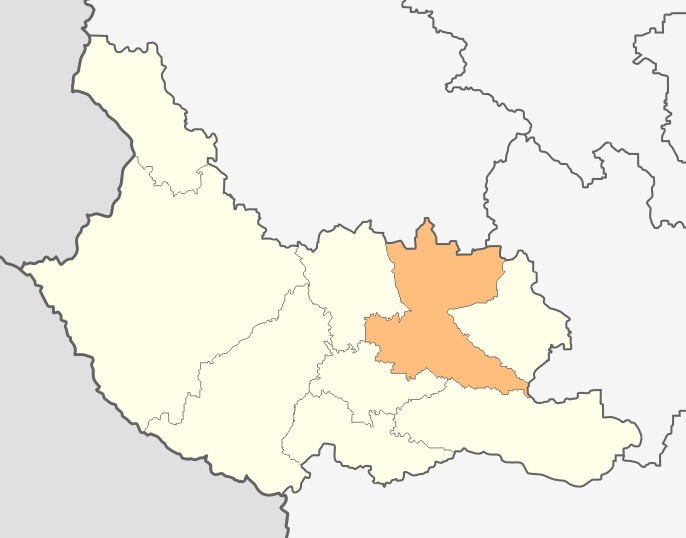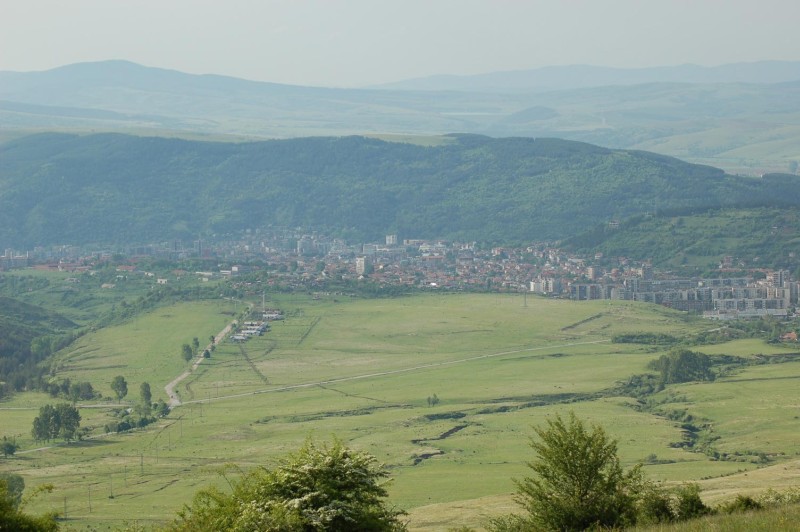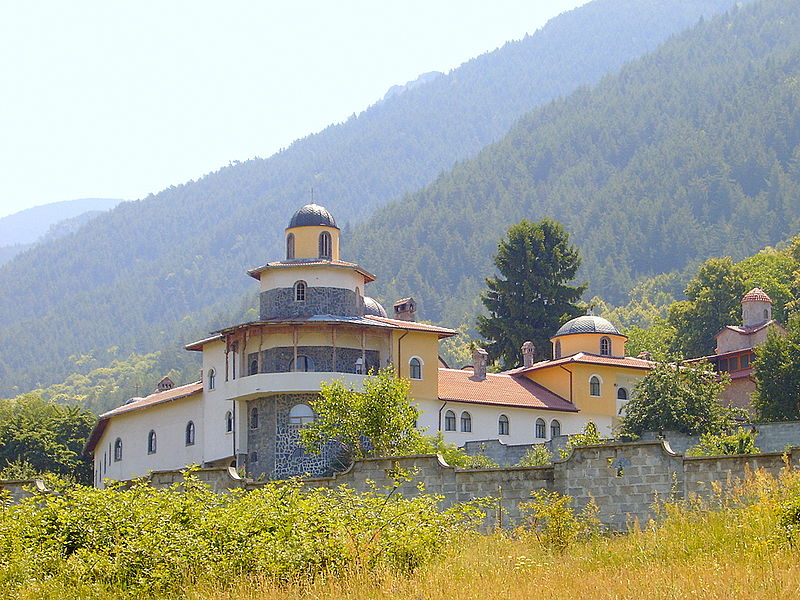Information about the town of Dupnitsa
Dupnitsa PropertiesThe municipality of Dupnitsa is located in the South-west Bulgaria and is one of the constituent municipalities of the Kyustendil region. The municipality has 17 settlements with a total population of 44 998 people as of 01.02.2011. The territory of the Dupnitsa municipality is 359 sq. km. or 0.32% of the territory of Republic Bulgaria. The average altitude in the area of Dupnitsa is 946.3 meters. To the east the municipality of Dupnitsa borders with the municipalities of Sapareva Banya and Samokov, to the west the municipality borders with the Bobov Dol municipality, to the north it borders the municipality of Radomir and to the south the bordering municipality is Rila and Boboshevo municipalities.
The following towns and villages are part of Dupnitsa municipality:
Balanovo, Bistritsa, Blatino, Gramade, Delyan, Dzherman, Dupnitsa, Dyakovo, Krayni Dol, Kranitsi, Kremnik, Platovo, Piperovo, Samoranovo, Topolnitsa, Cherven Bryag, Yahinovo.
The old name of the town is Dubnitsa from the old Bulgarian word Dub which means Oak, other old names of the town are Tobnitsa, Dupenitsa, Dupnetsa and Dupla. The town is administrative center and is the second biggest municipality in the Kyustendil region.
A settlement from the stone age, in ancient times in the area was located the Thracian town of Germanea, which had a key role as a major crossroad during the times of the Roman Empire and in later times. The town is located in the foot of the Rila mountain and next to two major Roman ancient road, among which one of the most important in Europe - Via Militaris - connecting Vizantion (Constantinople) with Rome.

In modern times the town of Dupnitsa is still famous as the "town on crossroad", although due to the less important roads E79 and 62. In the town and the surroundings there are medieval churches, remains from Thracian culture, necropolis, old clock tower as well as a Roman thumb.
According to the counting in 2011 in the town of Dupnitsa live more than 33 519 people.
In the oriental section of the National Library "St. St. Kiril and Metodi" is kept a fragment of a comprehensive Mufasa register of hasove and fiefdoms in Sofia. The document is a partially preserved part, without any doubts, of a bigger defter, containing 27 sheets, without a beginning and end. It is written with fine handwriting with black ink. The condition of the fragment is very bad, in some places the pages are missing, or damaged by moisture or eaten by insects. The defter dates back from 1451. There is a solid proof in this document that by 1451 the town of Dupnitsa was already named and existing although as a village at that time.
The medieval name of the town of Dupnitsa is Tobinitsa, information for this fact could be found in the road diary of knight Arnold Fon Harf, who visited Bulgaria in 1499. The names Dupla, Dabnitsa and Dupnitsa.
For the first time the name Dupnitsa appears in the Ottoman register from the third quarter of the XVth century, earlier than the visit of Arnold Fon Harf. The name of the town is mentioned in 1565 again as Dupnitsa, and in the London Gospel from 1578 cites the name as Dupenitsa. In 1634 the name of the town is stated as Dupnetsa. Apparently all statements are pointing to the same name and it was a matter of spelling. In 1948 the name of the town was changed the Communist party to Stanke Dimitrov, after the name of the partisan Stefan Dimitrov. The name of the town was changed again in 1949 to Marek, after the nick name of the person - Marek. This name lasts only 1 year till 1950, after which the name was changed permanently to Stanke Dimitrov which lasts till 1990. After the transition from Communism to Democracy the old and original name of the town was given back, but not as Dubnitsa but as Dupnitsa.
The town of Dupnitsa is situated in the north-west foot of the Rila mountain to the east of Konyavska mountain and to the south of Verila. The line of transport corridor 4, the European transport corridor E79 and the second class road 62 and the railway transport line which are connecting the Athens with Sofia and Bucharest, Tirana and Skopie with the Bulgarian black sea coast as well as with many Bulgarian and world destinations are passing trough the town. In close proximity is the border with Macedonia - 30 km away straight line and 60 km with a car, Serbia is 50 km away straight line and 60 km away with a car and Greece is 90 km away straight line and 110 km away by car, the new country Kosovo is 110 km awat straight line and 150 km by car.
Dupnitsa is about 50 km away from the capital of Bulgaria - Sofia, about 30 km away from the town of Blagoevgrad, about 40 km away from the district city of Kyustendil, about 170 km. away from the city of Plovdiv, at approximately the same distance from the capital of the country of Macedonia - Skopie and at about 220 km from the second biggest city in Greece - Thessaloniki. In close proximity are the winter ski resorts of Panichishte - just 15 km. away, Borovets - 50 km. away and Bansko - 80 km. away. In the recently taken territories from the municipality of Dupnitsa are located the Rila monastery, Panichishte, The seven rila lakes, Geizera in Sapareva Banya - the hottest spring in Europe as well as many necropolis.
Trough the town are passing the rivers of Dzherman, Bistritsa, Otovitsa, Samoranska river and Dzhuberna, the town is located in the valley of the river of Dzherman.
Relief map of Dupnitsa
The town of Dupnitsa is located in the transition part between the Upper Dupnitsa field and the Lower Dupnitsa field. The average altitude is 530 - 540 meters, for the whole municipality it is 530 - 540 meters. The relief is formed mainly by low mountains and valleys. The valley comb is surrounded by fencing slopes and middle height mountains, being more opened to the south down by the valley expansion of Dzherman by the Lower Dupnitsa field.
The climate in Dupnitsa municipality is moderate with Mediterranean influence, due to the open relief towards the valleys of the Dzherman and Strouma rivers. According to data from the meteorological station in the town for the period 1931 - 1970 the average temperature is 10.6 °С. The coldest month is January with average temperature -1,0 °С, the hottest month is June with 21,0 °С.
The winter is comparatively cold. The rains during the winter are the least as far as quantity and density - 379 l/m2, but most often. Most often it is snowing from the end of November till the middle of March, the average duration is 100 days. The average actual number of days with snow cover is 35- 40 days per year. The snow cover rarely goes over 0.5 meter deep. For the winter most typical is the north-eastern wind, which appears in a certain separate type of weather environment. When the temperatures increase there some appearances of foehn. The fogs are most frequent and longest in December. The typical valley temperature inversions are formed. Compared with the Kyustendil field here the inversions and the fogs are weaker and shorter. This is caused by the larger openness to the south and the constant draining wind. The absolute minimum in Dupnitsa was measured in a condition of very strong temperature inversion and is -30 °С and is one of lowest in the Kyustendil region.
The spring is cool with frequent rains, accompanied with thunderstorms. The average total amount of rains during the Spring is 167 l/m2. The rivers are marking freshet and due to the melting snow. The total solar radiation increases, the fogs decrease and the inversions are weak. Almost every year during March is the last snow fall for the season.

The summer is comparatively warm, the hot days are few. Usually in the beginning it is more rainy with strong thunderstorms. Sometimes the summer is very rainy and the rains reach big quantities. Hail falls very rarely, but in the last decade this phenomenon is observed more often. The summer is the most rainy season, the total amount of rain is 171 l/m2. The highest temperature measured in Dupnitsa until 1970 is 39.3 °С.
The Autumn is warmer than the Spring. It is characterized with the first frosts in September - October. The rains are long and intense, sometimes they are of summer type and are torrential. Very often September looks like a Summer month or like October - November - almost winter month. Almost every year the first snow falls in November. The total quantity of the rains is 155 l/m2.
The town of Dupnitsa itself is separated in 18 quarters, they are as follows: Arakchiiski most, Baykal, Beshika, Bistritsa, Varosha, Vassil Levski, Vazrazhdane, Gorna Mahala, Railway station, Ivan Vazov, Pazar, Podina, Progona, Razvesena Varba, Rilski ezera, Spartak, Hristo Botev and Villa zone - Karshia.
Settlements on the territory of Dupnitsa municipality exist since the late stone age and the antiquity. In the outskirts of the town are located the remains of the Thracian town Germanea. Close to the town of Dupnitsa is passing the important trade and military road Via Miitaris.
In the medieval age Dupnitsa is part of the first and second Bulgarian kingdoms and for a short time part of the Byzantine and Dushanovo Serbian kingdom. After the fall of the Belbazhd despotism, Dupnitsa is emerged to the Ottoman Empire. It becomes and important stop on the road from Constantinople to Western Europe, due to this reason many travelers are depicting the town between 14 and 18th century. In close proximity is the spiritual sanctuary of the Rila monastery, which becomes a man cultural center for the South-western Bulgarian lands.
After the liberation of Bulgaria in 1878, and subsequent Congress of Berlin from 1879, Dupnitsa goes within the boundaries of the Principality of Bulgaria. Many Bulgarian fugitives from Macedonia concentrate in the town and Gotse Delchev creates a border post of IMRO. In 1904 in the town was created and dislocated the headquarter of the 7th Rilla division in which was built one of the oldest hospitals in Bulgaria.
During the outbreak of the Balkan war in 1912, 18 people from the town are volunteers in the Macedonian - Adrianople resistance, the squad from Dupnitsa was named - the 7th Rilla infantry division.
After the end of the First World war, the elections for a mayor of Dupnitsa were won by the Kosta Petrov from the Social Democratic Party. They create the Dupnitsa Commune which lasts for 842 days. On 21 of February 1923 the mayor was murdered by Haralampi Zlatanov a member of IMRO. At this time Dupnitsa becomes a center of the tobacco production and mining. During the Second World War, Dupnitsa was bombarded by the Western Allies. On the 4th of January 1944, about 108 American B-17 bombers had to bombard the capital Sofia, but due to a dense Fog they were deviated and 40 bombard planes throw 150 bombs over Dupnitsa. More than 40 buildings were destroyed.
The archeological researches indicate that around the contemporary location of the town park and clock tower was built an early Byzantine fortress from the V - VIth century and was existing till XII century, according to legends at the same place later was built the Dupnitsa fortress, demolished by the Turkish commander Lala Shahin. The area of Razmetanitsa is close to Dupnitsa, where according to Yoan Skilitsa and contemporary researchers Tsar Samuil killed his brother Aron.
The town of Dupnitsa is known as "Blue fortress". In the latest Bulgarian history Dupnitsa became famous as "town of barricades" an expression of people's discontent with the government of Zhan Videov.
Economics and Public institutions
There are many state and public institutions in the town: administration of Dupnitsa Municipality, Regional court house, police stations, hospitals, fire departments, post offices, schools, banks and others.
Schools in the town of Dupnitsa:
Elementary schools in Dupnitsa:
Neophit Rilski, St. Kliment Ohridski, Evlogi Georgiev, Neophit Rilski found in 1897, St St Cyril and Metodi, Hristaki Pavlovich,
High Schools in Dupnitsa:
St Paisii Helendarski, Hristo Botev, Professional school of transport, professional school of Mechanical Engineering, Professional school food and chemical technology, Professional school of Fashion and Business administration, Professional school Akad. Sergey P. Koroliov.
Universities in Dupnitsa:
Pedagogical College "St. Ivan Rilski "- at the Technical University of Sofia.
Population of Dupnitsa
The population of the town contains of almost 100% Bulgarians from the Shop Bulgarian ethnic group. Dupnitsa is famous with its historical group of Jews, such as Jack Aseov - a Jewish merchant and tobacco trader from the town who become millionaire. After the Second World War, almost all Jews emigrate to Israel, at present time in the whole Kyustendil region there are only 29 ethnic Jews, almost all of them are living in Dupnitsa, they are people above the age of 60.

In Dupnitsa is very difficult to find a representative of other religions beside the Orthodox Christian. There are about 10 orthodox churches in the town without the ones in the villages in the area. For the celebration of the town is chosen the day of the St. Ivan Rilski and is celebrated since 1998. Temples and other religions are not present, exceptions are two houses which are announced as protestant praying homes. There are Jewish graveyard in the town, in the past there was synagogue.
In the beginning of the 19th century there are only 6000 people in Dupnitsa. In 1838 the population is 7 - 8000 people. After the liberation from Ottoman Yoke in the end of 19th and the beginning of the 20th century the town is among the 10 largest towns in Principality of Bulgaria and the Kingdom of Bulgaria.
In 1980 the town of Dupnitsa has a population of 50 - 60 000 people. After the fall of the communist regime and opening the borders of Bulgaria many locals emigrate mainly to Milan, Italy and Chicago, USA. In 1994 after the mass emigration of the local population the town of the Dupnitsa becomes the 29th largest town in Bulgaria with 41 658 people.
Cultural and Historical landmarks
The Rila Monastery, located in the area of Dupnitsa is the biggest in Bulgaria, the main gate to the monastery carries the name "Dupnishka Porta"
Saint Spas, in the village of Cherven Bryag is the only preserved medieval church in the municipality.
Near the town could be found excavations of the Thracian culture, necropolis, thumbs from Roman times and others. Symbols of the town are the tobacco storage houses and fields, described in the novel "Tiutiun" by Dimitar DImov.
After the occupation of Dupnitsa by the Ottoman Turks, all medieval churches in the town were demolished and now in the town itself there are no such churches. In the times of the Ottoman Empire, there were 13 mosques and only 2 churches, although there were more Christians than Muslims, after the liberation all mosques, except one were demolished, the last standing mosque fell in an earthquake in 1913. Today in its place is located the House of arts and a Gallery with a exhibition of the mosque.
Theaters in Dupnitsa
The town is famous with its cultural traditions. During the 1950 and 1960s there were amateur formations. There was an opera theater, which was presenting "Belle Helene" by Offenbach. A leader of the troupe is Veneta Vicheva. The Theater carries the name of one of the biggest Bulgarian movie starts - Nevena Kokanova who was born in Dupnitsa.
Festivals in Dupnitsa
The international folklore festival "Peace on the Balkans", "Rila is looking at us", Rila sings and dances".
Sport in Dupnitsa
Dupnitsa is a town with a sport spirit and has old traditions and achievements in the different sports. Among the sport facilities the biggest and the most significant ones are the legendary stadium "Bonchuk" which has more than 81 000 sq.m. area and could accommodate more than 20 000 visitors, the sports hole which is multifunctional with area of 1250 sq.m. and has 640 seats. It was built in 1971, at the end of 2005 inside was constructed artificial climbing wall. There is a separate stadium for baseball and football with 34 000 sq.m. area.
The most popular football team in Dupnitsa is Marek, which is famous with its victories against Bayern Munich, the team of Sir Alex Ferguson, the Hungarian champion as well as other teams from the European and Bulgarian championships. The Volleyball team Marek Union Ivkoni has one of the most developed children schools on the Balkans. The following sports clubs exist in Dupnitsa : PFC Marek, VC Marek Union Ivkoni, chess team Kapablanka, horse ridding Marek P&G, Badminton club Pobeda, Sports climbing club for extreme sports Otovitsa, club for classic wrestling Dan Kolov, Taekwondo club Gladiator, Karate club S.H.A.G.I., Kick boxing club and MMA Marek, Softball and baseball club Angels - Dupnitsa, Boxing club Mokata, Baseball and softball club Devils.
Dupnitsa Properties

